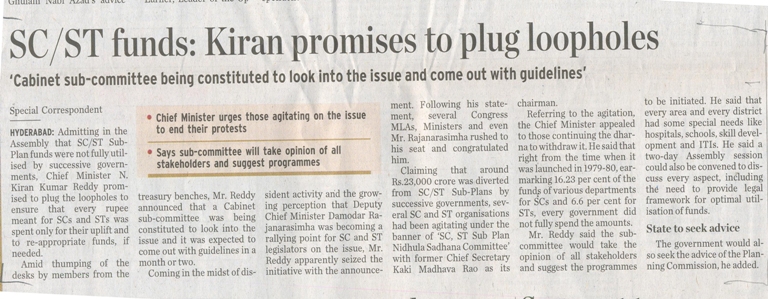Manish Kumar Rao
Keywords- Income Inequality, Rich, Poor, Oxfam’s Report, Tax, GST
Oxfam’s recent report on economic inequality in India has highlighted the deepening of income disparities in the country during the COVID-19 pandemic. The report indicates that income inequality in India is not only persistent but has increased largely due to the pandemic, which has had a disproportionately negative impact on the lower strata of the society, including the Dalits and Adivasis. The report also suggests that the increasing economic fissures in the country are a result of a combination of factors such as the concentration of wealth, inheritance of wealth and caste privilege, and the physical remoteness of certain communities from resources that foster upward social and economic mobility.
One of the most striking indicators of economic inequality in India is income disparities. The report finds that wealth is concentrated in the hands of a small proportion of the population, and this trend has only intensified during the pandemic. The COVID-19 outbreak has led to a significant contraction in the income and wealth of the bottom 50% of the Indian population. In 2020, their income share was only 13% of the national income, and just 3% of national wealth. Meanwhile, the top 30% of the population owns over 90% of India’s wealth, with the richest 10% owning over 72% of the wealth, and the richest 5% owning nearly 62%. These figures are even higher than those seen in the pre-pandemic years (2018-19), indicating that the richest have only gotten richer during the pandemic.
The report also highlights the increasing number of billionaires in India, which has risen from 102 in 2020 to 166 in 2022. In contrast, the number of poor people in India is 228.9 million, indicating a substantial increase in economic inequality.
Another significant factor contributing to economic inequality in India is the hike in the Goods and Services Tax (GST). The government had reduced corporate tax slabs from 30% to 22% before the pandemic, resulting in a loss of 1.84 lakh crores in revenue. To compensate for this loss, excise duties and GST on the prices of petroleum and diesel were significantly increased, which had an unequal impact on rural and urban areas of India, particularly in terms of inflation. In September 2022, inflation was 7.56% higher in rural India than in urban regions, with food prices nearly twice as high in rural areas. The report suggests that the pandemic has further widened economic fissures in India.
To address economic inequality, Oxfam recommends taxing the rich. The report dedicates an entire section to providing reasons for this recommendation, arguing that even a small percentage of the wealth tax on Indian billionaires could fund major government schemes that could be instrumental in uplifting those from the lower economic strata. For instance, a 1% wealth tax on Indian billionaires could fund the National Health Mission, India’s largest healthcare scheme, and provide Rs 36,960 crores for three years. Taxing the top 10 billionaires at 5% would cover healthcare costs for tribal areas for five years, while taxing India’s billionaires at 2% would support the nutrition of India’s malnourished for three years through the Supplemental Nutrition Programme (SNP).
Moreover, taxing the wealthiest 10 billionaires at 1% would cover the shortfall between the amount requested for the Samagra Shiksha (centrally-supported scheme for school education) and what the ministry of education granted for three years. Taxing 4% would cover the entire amount of funds needed for two years.
The report suggests that taxing India’s wealthiest individuals, even in small proportions, can generate significant funds that could be used to support government schemes aimed at improving education, health, and reducing economic inequality. For instance, taxing the top 100 billionaires at 2.5% could generate enough funds to bring out-of-school children back to receive quality education. Similarly, taxing the top 100 billionaires at 2% could fund the mid-day meals scheme proposed by the National Education Policy 2020. Oxfam also recommends strengthening the safety and bargaining power of India’s labour force and ensuring social protection for those working in the informal economy.
The government has failed to implement policies that can reduce the gap between the rich and the poor. For example, despite the implementation of programs such as the Mahatma Gandhi National Rural Employment Guarantee Act (MNREGA), which aims to provide work opportunities for the rural poor, income inequality between rural and urban areas continues to increase. Furthermore, the government has failed to implement policies that can address the root causes of poverty, such as lack of education, health care, and employment opportunities. One of the primary reasons for the growing income inequality in India is the unequal distribution of resources and opportunities.
The country has a vast population, and the limited resources and opportunities available are not evenly distributed, resulting in a significant portion of the country’s wealth and income being held by certain individuals and groups. For example, only certain individuals and groups have access to quality education and job opportunities, while the majority of the population is excluded from these opportunities. This has created a significant income gap between the rich and the underprivileged. Another factor contributing to income inequality is the effect of globalization. Globalization has led to the growth of multinational corporations, which often pay low wages to workers in developing countries, including India. Employees of these companies often work in poor conditions and are not adequately compensated, leading to an unequal distribution of wealth. In addition, globalization has reduced the number of jobs in the formal sector, which often pay higher wages, as many companies have moved to the informal sector in search of lower wages. Another reason for the growing income inequality in India is the lack of progressive tax policies. The country’s tax system is regressive, meaning that the tax burden falls disproportionately on the poor and middle class, while the rich and wealthy are able to evade tax and enjoy tax exemptions. The result has been that the rich and wealthy are enjoying a greater share of the country’s wealth and income, while the poor and middle class are struggling to make ends meet.
The absence of a progressive tax system has resulted in a lack of public goods and services, such as healthcare and education, for most of the population. Corruption and nepotism are also major contributors to the rising income inequality. Corruption and nepotism of the country’s political and economic elite has resulted in certain individuals and groups receiving a disproportionate share of the country’s wealth and income, while the majority of the population remains excluded from these benefits. Corruption and nepotism of the country’s political and economic elite has also resulted in the absence of fair and transparent policies and regulations, which have contributed to unequal distribution of resources and opportunities in the country. To address the issue of income inequality, it is important that the country’s political and economic elite implement policies and regulations that promote equality and inclusion, and ensure that the benefits of economic growth are distributed fairly and equitably among all citizens.
The current tax system in India favors the rich, with the top 1% of the population paying only 3% of total income tax. This has created a situation where the rich have become richer while the poor have been left behind. The growing income inequality has a cascading effect on the economy and society as a whole. Research has shown that high levels of income inequality can lead to social and political unrest, reduced economic growth, and reduced access to essential services for the poor. The Government of India should take immediate steps to solve this growing problem. This includes implementing progressive taxation, investing in rural development, providing quality education and healthcare to all, and creating more job opportunities. Only by addressing the root causes of income inequality can we create a more equitable and just society for all of us.
Lastly, rising income inequality in India is a major concern that needs to be addressed urgently. Failure to do so will lead to more social and economic problems in the future. It is time for the government to take meaningful action and ensure that the benefits of economic growth are shared by all sections of the population. In conclusion, income inequality is a complex issue, with many causes and implications. The government should work to provide equal opportunities for all, implement policies that address the root causes of poverty, and ensure that multinational corporations pay fair wages to their employees. In addition, the private sector should also play a role in reducing income inequality by promoting equal opportunities and investing in the development of rural areas. Only by addressing these issues can India achieve a more equitable distribution of wealth and create a sustainable and inclusive economy for all its citizens.
~~~
Manish Kumar Rao is a B.Tech from MMMUT, Gorakhpur, and works as a Data Analyst at an investment securities firm.









